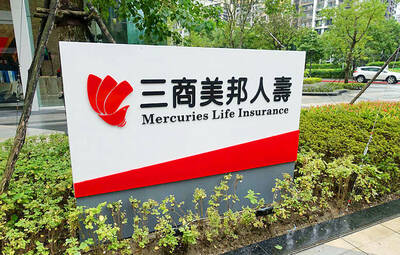Despite the launch of its newest high-end flagship smartphone, HTC Corp’s (宏達電) revenue last month plummeted 38.66 percent to NT$13.54 billion (US$439.95 million) from NT$22.07 billion a year earlier.
On a monthly basis, the figure fell 32.36 percent from March’s NT$20.02 billion.
Analysts attributed the poor revenue figure to disappointing sales of the HTC One M9, which hit the market last month.
“Revenue for last month was weaker than expected, which was due to poor M9 demand,” a Yuanta Securities Investment Consulting Co (元大投顧) analyst, who declined to be named, told the Taipei Times.
“HTC might have underestimated the Qualcomm Inc S810 processor’s thermal issue, and this has resulted in poor reviews and concern from carriers,” the analyst said.
He said he estimates M9 shipments this year would reach only 4.5 million units, down between 35.71 percent and 43.75 percent, compared with the 7 million units and 8 million units reached by HTC’s previous flagship models, the M7 and M8.
At a recent investors’ conference, HTC gave a sales forecast of between NT$46 billion and NT$51 billion for this quarter.
Based on the firm’s sales for last month, that means HTC has to make NT$32.46 billion in the remainder of the quarter to reach the low end of its sales guidance.
A KGI Bank analyst, who declined to be named, said that he thinks the likelihood of HTC reaching the low end of its sales guidance for this quarter is low.
“Based on our channel checks, retailers have been lowering the M9’s price in order to attract consumers’ attention. This reflects a negative market reaction to the flagship,” the analyst said by telephone.
Last month’s launch of the M9’s variants, the M9 Plus and E9 Plus, might help sales pick up mildly this month and next month, the analyst said.
HTC’s revenue totaled NT$55.06 billion for the first four months of this year, down by 0.24 percent from last year’s NT$55.19 billion.

Mercuries Life Insurance Co (三商美邦人壽) shares surged to a seven-month high this week after local media reported that E.Sun Financial Holding Co (玉山金控) had outbid CTBC Financial Holding Co (中信金控) in the financially strained insurer’s ongoing sale process. Shares of the mid-sized life insurer climbed 5.8 percent this week to NT$6.72, extending a nearly 18 percent rally over the past month, as investors bet on the likelihood of an impending takeover. The final round of bidding closed on Thursday, marking a critical step in the 32-year-old insurer’s search for a buyer after years of struggling to meet capital adequacy requirements. Local media reports

TECHNOLOGICAL RIVALRY: The artificial intelligence chip competition among multiple players would likely intensify over the next two years, a Quanta official said Quanta Computer Inc (廣達), which makes servers and laptops on a contract basis, yesterday said its shipments of artificial intelligence (AI) servers powered by Nvidia Corp’s GB300 chips have increased steadily since last month, should surpass those of the GB200 models this quarter. The production of GB300 servers has gone much more smoothly than that of the GB200, with shipments projected to increase sharply next month, Quanta executive vice president Mike Yang (楊麒令) said on the sidelines of a technology forum in Taipei. While orders for GB200 servers gradually decrease, the production transition between the two server models has been

US sports leagues rushed to get in on the multi-billion US dollar bonanza of legalized betting, but the arrest of an National Basketball Association (NBA) coach and player in two sprawling US federal investigations show the potential cost of partnering with the gambling industry. Portland Trail Blazers coach Chauncey Billups, a former Detroit Pistons star and an NBA Hall of Famer, was arrested for his alleged role in rigged illegal poker games that prosecutors say were tied to Mafia crime families. Miami Heat guard Terry Rozier was charged with manipulating his play for the benefit of bettors and former NBA player and

BETTER THAN EXPECTED: The firm’s Q3 results exceeded its projections, based on ‘the underlying strength of our core markets,’ chief financial officer Dave Zinsner said Intel Corp returned to profitability and gave an upbeat revenue forecast after PC demand grew, suggesting that it is making progress on a long and challenging comeback attempt. In the third quarter, revenue rose 3 percent to US$13.7 billion. The Santa Clara, California-based company posted its first quarterly net income since the end of 2023, with earnings per share of US$0.23, excluding some items. Analysts had estimated sales of US$13.2 billion and earnings per share of US$0.01 on average, according to data compiled by Bloomberg. Fourth-quarter sales would be roughly US$13.3 billion, the company said in a statement on Thursday. Intel shares gained about